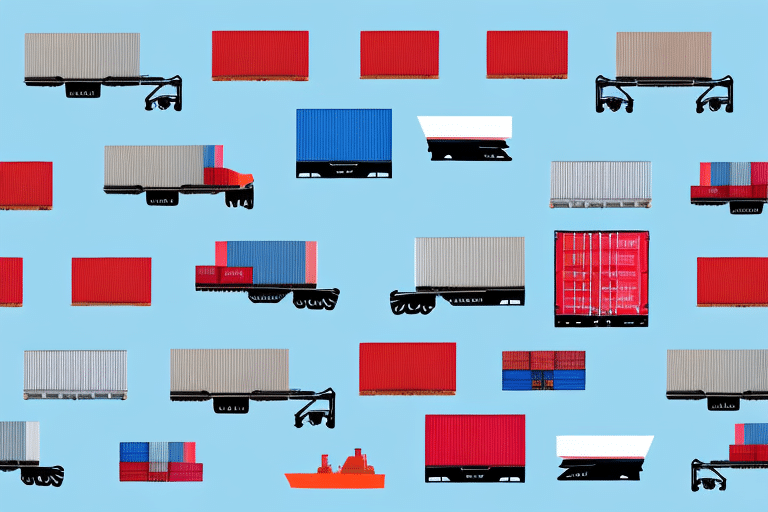How to Successfully Switch 3PL Fulfillment Centers
In today's fast-paced world of e-commerce, outsourcing your order fulfillment to a third-party logistics (3PL) company can be a smart business decision. However, one of the biggest challenges you may face is finding the right 3PL fulfillment center that meets your needs and exceeds your expectations. Sometimes, your current 3PL provider may not fulfill your requirements, prompting you to switch to a new provider. This article explores everything you need to know about switching 3PL fulfillment centers, including the benefits, key considerations, and steps to ensure a smooth and successful transition.
Benefits of Switching 3PL Fulfillment Centers
Switching 3PL fulfillment centers can provide numerous advantages for your business, including:
- Improved Performance: If your current provider experiences delays or inaccuracies in order processing, a new 3PL can offer more reliable services.
- Enhanced Services: Access to advanced technologies like real-time inventory tracking, automation, climate-controlled storage, or specialized handling for hazardous materials can improve your operations.
- Cost Efficiency: A new provider may offer more competitive pricing structures, helping you reduce operational costs.
- Expanded Reach: Partnering with a 3PL that operates in more regions or countries can help you grow your customer base and increase sales.
- Better Customer Service: Enhanced communication and support from a new provider can lead to higher customer satisfaction and loyalty.
These benefits can collectively contribute to increased efficiency, scalability, and profitability for your business.
Key Factors to Consider Before Switching 3PL Providers
Before making the switch, evaluate the following key factors to ensure the new 3PL aligns with your business objectives:
- Business Needs and Goals: Clearly define what you need from a 3PL and how it aligns with your growth plans.
- Inventory and Growth: Assess your current inventory levels and forecasted growth to choose a provider that can scale with you.
- Geographic Location: Ensure the 3PL has distribution centers in locations that optimize your shipping times and costs.
- Service Quality and Reliability: Research potential providers’ track records for accuracy, speed, and reliability.
- Cost Structure: Compare fees and pricing models to find a provider that offers value without compromising quality.
- Technology Integration: Verify that the 3PL's systems can integrate seamlessly with your existing platforms and offer real-time data visibility.
- Customer Service: Evaluate the responsiveness and expertise of the provider's customer support team.
Evaluating Customer Service and Communication
Effective communication is crucial. Ensure the potential 3PL has a dedicated account manager and robust support channels to address any issues promptly.
Assessing Technology and Software Capabilities
Advanced technology can streamline operations. Look for providers that offer integration with your e-commerce platforms, inventory management systems, and provide real-time tracking and analytics.
Choosing the Right 3PL Fulfillment Center
Selecting the right 3PL involves a comprehensive evaluation of potential providers. Consider the following when making your choice:
- Industry Experience: Choose a 3PL with experience in your specific industry to ensure they understand your unique requirements.
- Scalable Solutions: Ensure the provider can grow with your business, accommodating increased order volumes and expanded product lines.
- Advanced Technology: State-of-the-art systems for order fulfillment, inventory management, and reporting can enhance efficiency.
- Security Measures: Confirm that the 3PL has robust security protocols to protect your business and customer data.
- Reputation and Reviews: Research customer testimonials, industry reviews, and any awards or certifications the provider has received.
Special Services Offered
Additional services like custom packaging, kitting, or reverse logistics can add value to your operations, especially if you have specialized product needs.
Steps for a Smooth Transition to a New 3PL Provider
Transitioning to a new 3PL requires meticulous planning and execution. Follow these steps to minimize disruptions:
- Notify Current Provider: Communicate your decision to switch clearly and provide adequate notice to facilitate a smooth transition.
- Share Detailed Information: Provide the new 3PL with comprehensive data about your inventory levels, order volumes, and business forecasts.
- Coordinate Transition: Work closely with both providers to ensure seamless transfer of inventory, order data, and operational processes.
- Test Systems: Validate that the new provider’s systems are fully integrated and functioning as expected before going live.
- Train Your Team: Ensure your staff is adequately trained on the new provider’s processes and systems.
Setting Realistic Timelines and Milestones
Establish clear timelines and checkpoints to monitor progress and address any issues promptly during the transition.
Best Practices for Transitioning Between 3PL Providers
To ensure a successful transition, adhere to the following best practices:
- Maintain Open Communication: Keep all parties informed throughout the process to prevent misunderstandings and delays.
- Monitor Performance: Continuously track key performance indicators (KPIs) to ensure the new provider meets your expectations.
- Involve Stakeholders: Engage all relevant departments within your business to ensure a unified transition strategy.
- Prepare for Contingencies: Have backup plans in place to address any unforeseen challenges during the switch.
Monitoring and Measuring the Success of Your New 3PL Partner
After the transition, it is essential to monitor the new 3PL’s performance to ensure they are meeting your business needs. Implement the following measures:
- Establish KPIs: Define and track key metrics such as order processing time, shipping accuracy, fulfillment costs, and customer satisfaction.
- Regular Reporting: Set up regular performance reviews and reports to assess the 3PL’s effectiveness.
- Customer Feedback: Gather and analyze customer feedback to identify any issues related to fulfillment services.
- Continuous Improvement: Provide feedback to the 3PL and work collaboratively to enhance their services.
Key Metrics to Track
Essential KPIs include order accuracy, on-time delivery rates, return rates, and cost per order. Monitoring these helps in evaluating the 3PL's impact on your business.
Conclusion
Switching 3PL fulfillment centers can be a challenging yet rewarding decision for your business. By carefully evaluating your options, planning the transition meticulously, and continuously monitoring performance, you can optimize your order fulfillment process for greater efficiency and profitability.






















